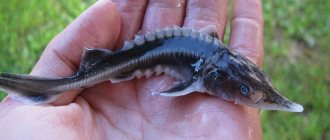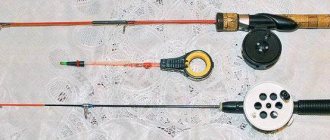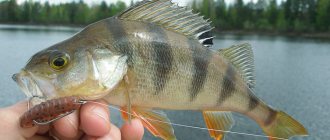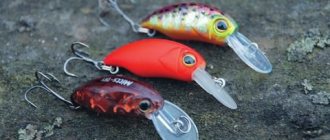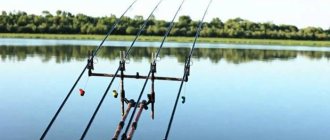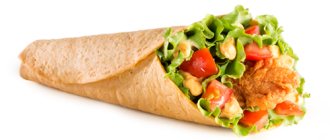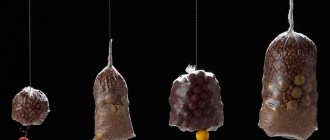What is twister
The classic twister is a silicone bait with a ribbed cylindrical body, at the end of which there is a crescent-shaped elastic tail.
It is this unusual tail that is the main element that attracts fish during the process of placing the bait. Twisters are the second most popular silicone bait, after vibrotail.
Twister features
Twisters have long been familiar to fishermen in the post-Soviet space and are still very popular, as they have a number of advantages. Thus, the positive features of twisters include the following:
- The soft and flexible silicone body does not scare off cautious predators;
- The low cost allows you to purchase a whole arsenal of twisters of different colors and sizes;
- Possibility of using various methods of equipment;
- Possibility of effective fishing at almost any depth;
- Excellent cross-country ability with non-snappy mounting of the bait.
Twister on a double
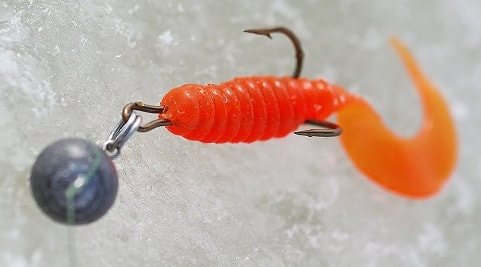
Popular options for equipping twisters include:
- equipment with a jig head;
- offset hook with a Cheburashka sinker through a swivel joint;
- diverter leash;
- Texas rigging;
- drop-shot rig;
- Carolina rig.
For fishing in still water, sinkers with a weight of 3-15 g are used, and for fishing in currents, weight heads with a weight of 15 to 30 g are required.
Technologies and methods of twister installation
There are several successful ways to attach such a bait to create catchy fishing gear. The most popular are:
- installation based on a jig head;
- spaced twister rigs;
- non-snacking lure mounts;
- hinged mounting method.
The technique of spaced rigs is that the weight and the bait must be moved away from each other. In this case, the silicone gets more free space and allows the person with the rod to perform measured, slow retrieves.
When fishing in more difficult conditions, you need to choose equipment that does not get caught on obstacles. With this type of installation, you can confidently fish rocky areas of the bottom, snags, and reservoirs with abundant vegetation. It is better to attach the nozzle in tandem with an offset hook, then it can easily pass through difficult places. With such equipment, the tip is hidden in silicone, and with a successful bite it is released and dug into the predator’s mouth.
To properly attach a twister attachment to an offset hook, you need to select an offset of the required length. Then pierce the bait through the “mouth” from the head and bring the tip out into the “neck” area. The twister is pulled to the bend and smoothly brought to the eye. Having unrolled the hook, carefully fold the body of the bait and sharply pierce it. The sting is brought out at the top of the nozzle and “sunk” in silicone. At the last stage, the bait with a sharp offset hook is attached to a sinker of the required weight.
To learn more:
How to make a girder for pike
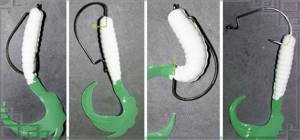
The most popular (even beginners and novice spinning anglers can handle it) way of mounting twisters is to mount them on a jig head - the bait is placed on a hook rigidly fixed in a weight. Twister jig heads come in the shape of a bullet, horseshoe, fish head, and boot. The most common are spherical. Such equipment is not difficult and provides the structure with the necessary rigidity of the connection.
The technology of hinged combination is that the twister is adapted to a single (you can use a double, triple - as you like) hook and attached to a weight called a “Cheburashka”. This fastening gives the bait a high level of freedom, allowing you to cast it to a maximum distance. The twister is attached to the weight with a clasp or winding ring. The disadvantage of this method is the possible overlap through the leash. In this case, the wiring will be less effective. To avoid unnecessary misfire, before inserting the twister, you need to slow down the slippery line by touching the spool with your fingers.
Catching perch with a twister
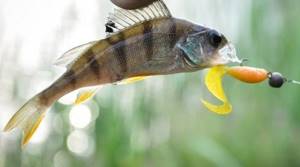
- If you want to catch perches, you will need small twisters.
- The average length of lures for perch is 4-5 cm, but large specimens are also caught on long silicone baits.
- Regarding the color of the twisters, it is worth saying that it is best to select the color directly on the pond, taking into account the conditions of the upcoming fishing.
Although perch cannot be called a very capricious fish, its preferences in terms of twister colors sometimes change under the influence of natural factors.
So, on sunny days we recommend fishing, first of all, with golden, orange, light brown baits with silver sparkles.

- For evening fishing or in cloudy weather, baits of bright, acidic colors are suitable.
- The same twisters will also be needed for fishing in muddy water or at very great depths.
- Red, green, and black baits are used in a variety of conditions.
Give preference to edible silicone; if possible, purchase twisters of a variety of scents, sizes and colors.
When fishing with twisters, water temperature plays an important role. It does not directly affect the bait itself, but it is important for determining the behavior of predators.
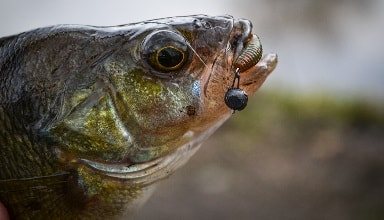
In sunny weather, when the water is well warmed up, the fish, as a rule, behaves more actively, and therefore the wiring will need to be energetic and fast.
On relatively cold days, many predators become passive and are unlikely to chase fast bait, so it is advisable to reduce the speed of the retrieve.
To catch active perch, retractable leashes with small twisters on the hooks are often used. To make such an installation, attach a large sinker to the end of the main line and, stepping back 10-15 cm up the line, make a loop for the leash.
2-4 leashes with single hooks and twisters attached to them will be enough. The length of the leashes fluctuates around 15-25 cm. Just one installation of such equipment can add several “minke stripers” to the catch.

Rating of the 10 best twisters
Among the many models of twisters presented in fishing stores, there are those that have long been tested by fishermen and have proven themselves to be excellent.
Twister Reins Fat G-Tail Grub

The Reins Fat G-Tail Grub is an edible twister with a distinctive G-shaped tail. The body of the twister is solid, round in cross-section, with shallow perforations, reminiscent of a worm or larva. In the middle of the body of the twister there is a thickening in the center for easy installation on the hook. The silicone from which the bait is made has an increased density to increase the service life of the bait on the hook. The silicone contains added salt and an attractant that is resistant to leaching and weathering. The Reins Fat G Tail Grub comes in three lengths of two (5 cm), three (7.5 cm) and four inches (10 cm). A two-inch twister is good for catching bass of any size. The twister is three inches long and is the most versatile, suitable for catching perch, pike and pike perch. A four-inch twister should be used for catching large walleye and pike. There are more than two dozen twister color options. The Reins Fat G-Tail Grub twister is especially effective on even retrieving with playing along.
Twister Relax Twister

The Relax Twister has a classic twister appearance, with a ribbed body and a flat crescent-shaped tail. The Relax Twister has an active game and is made of strong and durable silicone. Twister has a wide range of sizes and a large number of colors. The Relax Twister is well suited for catching pike and zander on the river.
You may be interested in: Retractable leash
Twister Keitech Mad Wag
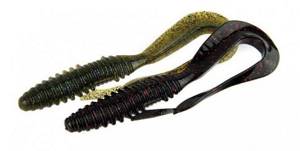
The Keitech Mad Wag twister is an excellent silicone bait designed for catching large pike, pike perch and catfish. The twister is 7 inches long, has a powerful ribbed body and a long triangular tail. The special tail design allows the bait to play even on the slowest retrieve. The ribs on the body of the twister not only visually increase the size of the bait, but also, when used with an offset hook, make the bait almost completely hook-free. The Keitech Mad Wag twister creates very powerful vibrations in the water that attract predators from a great distance. The twister is made of soft edible silicone, which contains a squid attractant. The twister can be mounted on a jig head, on an offset hook with a Cheburashka weight, and the twister can also be used as part of a variety of spaced rigs. The Keitech Mad Wag twister is produced in more than a dozen different colors, mostly dark shades.
Twister Mann`s Twister
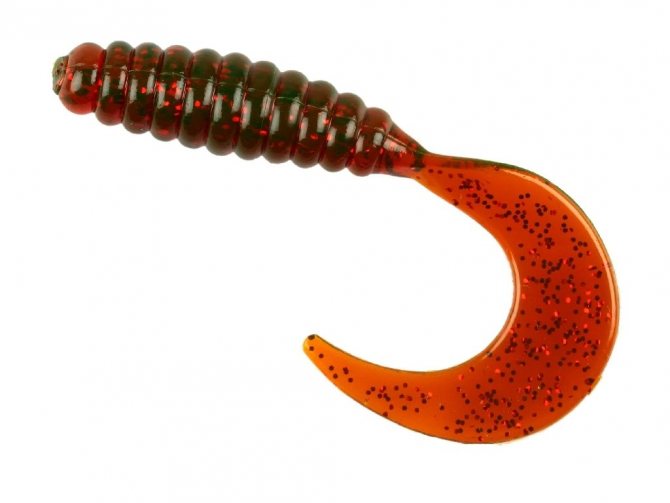
Mann's Twister has a classic twister shape: a ribbed body and a crescent-shaped ribbon tail. The bait is made of inedible silicone; the material retains its properties at low temperatures and is quite resistant to damage from the teeth of predators. Mann's Twister has an extremely mobile tail, which surprisingly resembles the movements of small fish. The bait is available in a variety of colors.
Twister Lucky John Pro Series Ballist
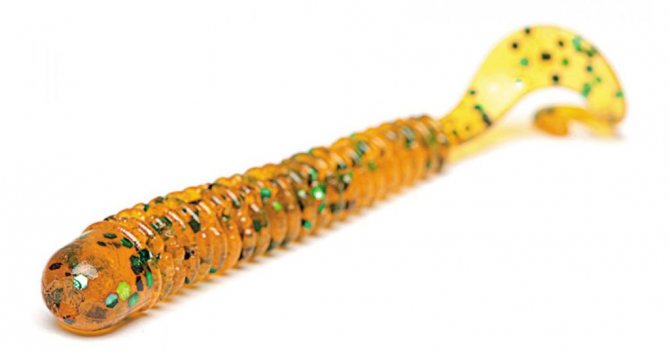
The Lucky John Pro Series Ballist twister is a hybrid between a twister and a silicone worm. The bait has an elongated ribbed worm-like body and a twister tail; its appearance can imitate different food items: fry, leech or worm. The Lucky John Pro Series Ballist twister is made of edible silicone with the addition of a shrimp-flavored attractant and comes in many color options. The twister can be used to catch pike perch, pike perch and pike perch.
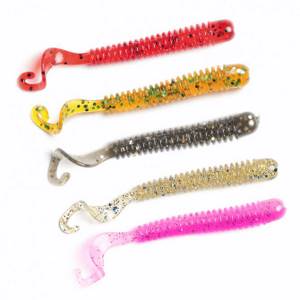
The Lucky John Pro Series Ballist twister can be used with classic mounting options: on a jig head or on an eared weight, as well as for a split shot, lead leader, Texas and Carolina rigs. When fishing with the Lucky John Pro Series Ballist twister, you should use a slow, bottom retrieve, with light loading. You can diversify the fishing by dragging the bait along the bottom, taking short breaks of 10-15 seconds. Good results are shown by short stepwise wiring of one revolution of the coil, with pauses of 2-3 seconds.
Twister Pontoon 21 Hightailer
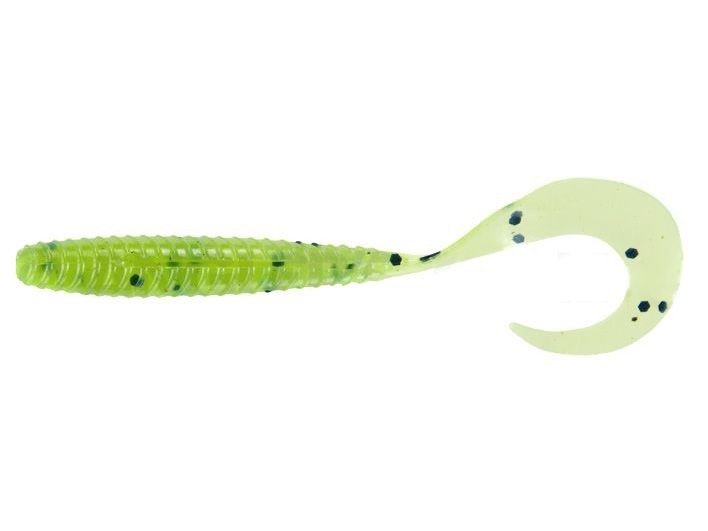
The Pontoon 21 Hightailer twister is made of soft edible silicone of the GUMEXIM brand with the addition of the SFT attractant. The twister has an elongated, slightly ribbed body and a long crescent-shaped tail. Inside the body of the Pontoon 21 Hightailer twister there is a special longitudinal channel, which makes it easier and more accurate to mount the twister on the hook, maintaining the correct centering and avoiding the bait falling over when retrieving. The size range includes twisters in 5 sizes, from 2 to 3.25 inches. The bait can be used when fishing both in still water and in the current; it plays well even on the slowest retrieve. The attractants included in the silicone twister additionally add to its attractiveness in the eyes of predators.
Twister Relax Turbo

The Relax Turbo twister is produced by the American company Relax, well known to anglers. The twister is made of high-quality elastic silicone, which provides the bait with realistic movement at any fishing speed. The Relax Turbo twister is made using multi-level lamination technology, thanks to which different color layers are combined in the bait.

The Relax Turbo twister has positive buoyancy, which expands the fishing possibilities and provides a more interesting play of the bait when retrieving. Twister is produced in a wide range of colors.
Twister Crazy Fish Angry Spin
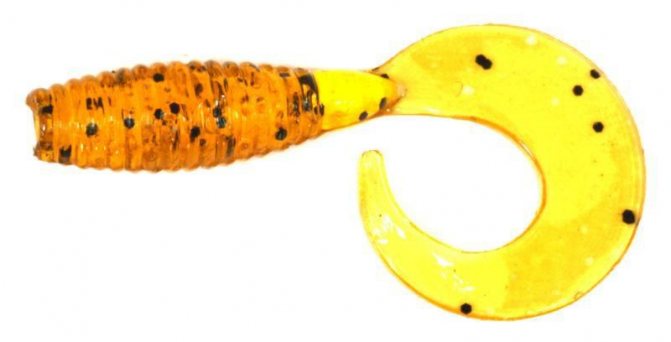
Twister Crazy Fish Angry Spin is a universal twister suitable for catching a wide variety of fish. The twister is made of soft silicone with the addition of two attractants and salt granules, which are embedded in the silicone, thanks to which the twister retains the aroma that attracts fish even after prolonged use. The tail of the Crazy Fish Angry Spin twister is very soft and flexible even with the slowest retrieve. The 1-inch long Crazy Fish Angry Spin is suitable for catching perch in tight ponds and can also be used for catching bream, rudd and other peaceful fish.
A twister so small that it can maintain its game even on a jig weighing 0.3 grams. The 2-inch long Crazy Fish Angry Spin twister is good for catching good perch, zander and medium-sized pike. Twister is available in a large number of catchy colors.
Twister YUM Walleye Grub
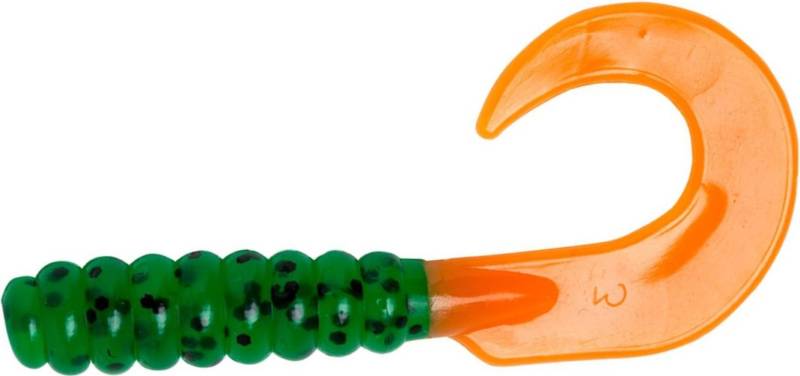
YUM Walleye Grub is a classic twister made from soft edible silicone with a strong and lasting anise aroma. The body of the YUM Walleye Grub twister has a heavily ribbed surface and a classic crescent-shaped tail. The twister tail plays well even with the slowest wiring. The bait is well suited for fishing in still water and on rivers. Twister is available in more than 20 color options. The twister can be used both in classic mounting options and for drop-shot and pull-out leash.
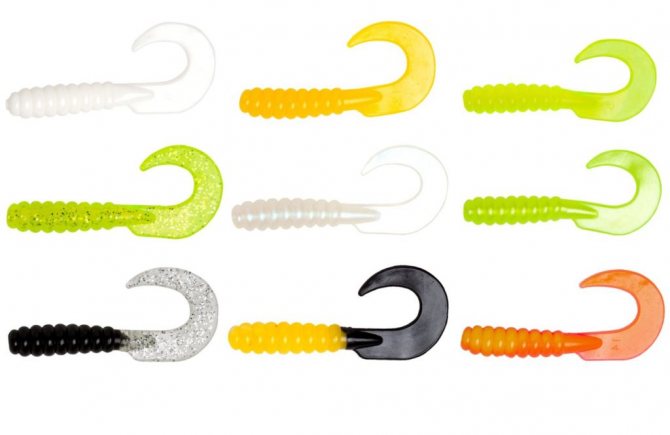
Twister Action Plastics 3FG
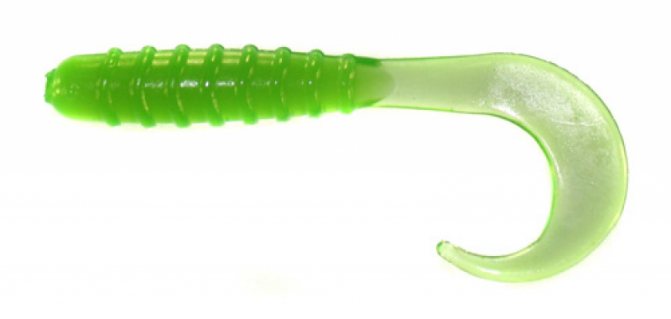
The Action Plastics 3FG twister is a classic twister with a ribbed body and a standard crescent tail. The silicone from which the twister is made is quite wear-resistant and can withstand several pike bites. Works well for most predators: perch, bass, pike and pike perch. The twister is produced in a variety of color variations, among which every angler will be able to choose the most suitable bait for specific fishing conditions. Twister has a good price-quality ratio. The Action Plastics 3FG twister can be used both in classic mounting options and for drop-shot and lead leash.
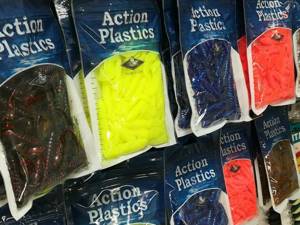
Catching pike with a twister
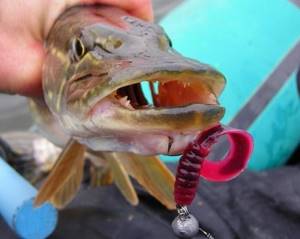
Twister is one of the most versatile lures for pike fishing. This predator can be caught using silicone in still water and with a fairly strong current, in shallow water with a lot of vegetation and at depth.
The clear drawback of twisters in the context of pike fishing is their rapid wear, because soft silicones are often severely damaged after attacks by a bloodthirsty predator.
“Pike” twisters are longer than lures for perch - 10-15 cm. If there are small holes in the large tail of the twister, light turbulence and noise sounds can form during wiring, which additionally attracts a predator.
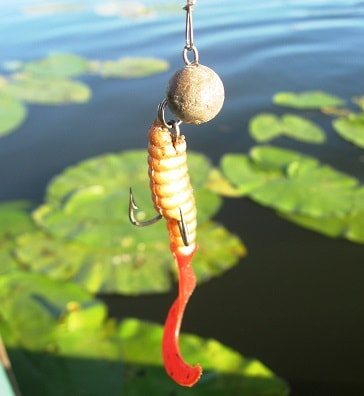
As with perch, pike can be caught using lures of a variety of colors. The most common and effective are yellow and light green twisters, as well as silicones the color of machine oil. Lures with a combination of several colors, for example red and white, would not hurt in your personal set.
When choosing twisters or vibrotails, give preference to edible bait, as its use increases the number of effective bites. This happens due to the fact that the predator holds the bait in its mouth longer, as it feels its taste and smell.
Blitz tips
Tips and tricks:
- When buying twisters , take several of each model - if you break off a catchy bait while fishing, it can be very quickly replaced with a similar one.
- When casting the bait, check with the movement of your index finger holding the line: whether it moves freely in the rings of the form, whether there is any overlap at the tip.
- When fishing in late autumn, lubricate the line with a special silicone lubricant. This will prevent it from freezing and clogging the upper passage rings with ice.
- When installing the bait , ensure that the hook passes as accurately as possible along the axial body of the twister. This will allow you to avoid it “falling over” when retrieving and the hook catching on the bottom when tossing.
- Carry the baits you use in a special bag attached to your belt, which will allow you to quickly change the twisters if they get caught and break off or if the pike does not grip.
- In order to analyze the catchability of a particular twister, keep a diary in which you describe the fishing conditions, weather, wiring and bait on which the fish was caught or the grips were noted. These notes will be useful in the future for choosing bait for fishing in similar conditions.
Twister wiring
When fishing with twisters, a variety of wiring options are used, but the main methods are uniform and stepped wiring.
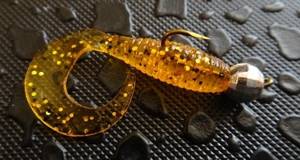
Uniform wiring is relevant in cases where you want to place the bait as close as possible to the “carpet” of aquatic vegetation, along its border. This wiring method also works well in shallows and in places with a flat bottom.
As mentioned above, the optimal speed depends on the degree of activity of the fish. Slowly moving bait is more often attacked by passive predators and pikes waiting in shelters.
Stepped wiring is used if the previous method is unsuccessful; it is also appropriate when fishing in areas with a bottom that is not uniform in relief.
In the summer, it is recommended to carry out the “step” more energetically, letting the bait fall for 3-4 seconds. On cold days, the “step” should be smoother, with a pause of 6-10 seconds.
We increase the catchability of the bait
To make the twister more catchy, use a few simple methods:
- Store twisters of different colors and manufacturers in separate compartments of a special box.
Separate storage - store twisters of different colors and manufacturers in separate compartments of a special box. This will prevent them from sticking together, staining one bait with another. - Coloring - to do this, use a waterproof marker, applying stripes of yellow, black, red, or color the twisters entirely.
- Repairing damaged baits - this method preserves a catchy twister and saves time on searching and purchasing it. It is very easy to repair bait damaged by the teeth of a pike: just heat the body in the place of the break over the flame of a small candle or lighter, connect and fix for 10-15 seconds.
- Increasing buoyancy - attach the bait to a floating head, implant a piece of foam, cork, or plastic into the body of the twister.
- Enhance the aroma - use attractants, adding 3-5 drops of them per twister.
How does a twister differ from a vibrotail?
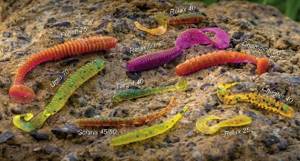
When fishing for pike and pike perch, spinners often use vibrotails, and when fishing for perch, twisters and vibrotails are used in equal parts.
This is due to the fact that the twister moves at a higher frequency than the vibrotail, which is especially good for catching perch. Pike loves a lower frequency and a larger amplitude of oscillations.
Twisters are more convenient for fishing from the shore, since silicones of this type fly further. Twisters are also very good for fishing in places with snags and grass, if you use “non-hooking” ones.
